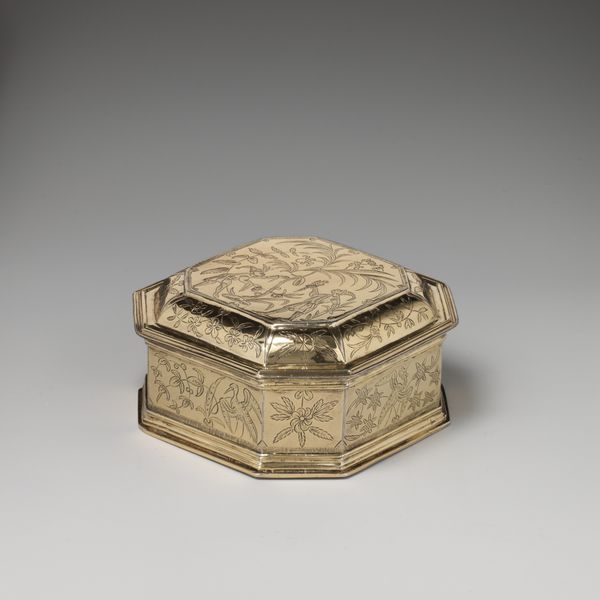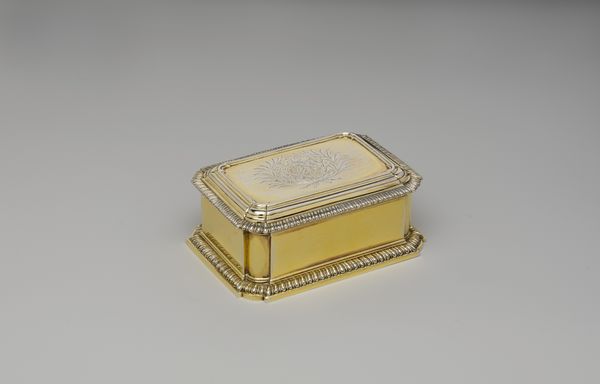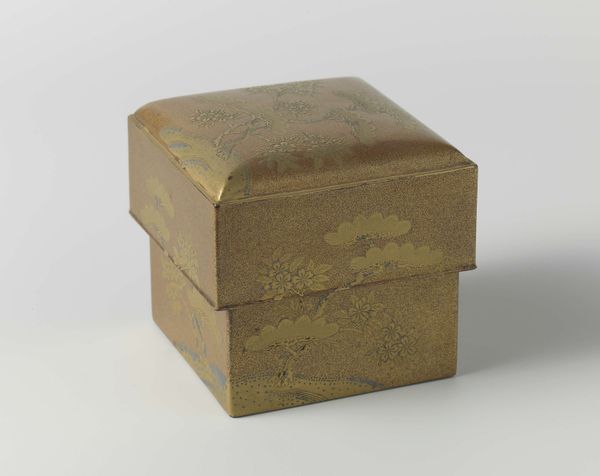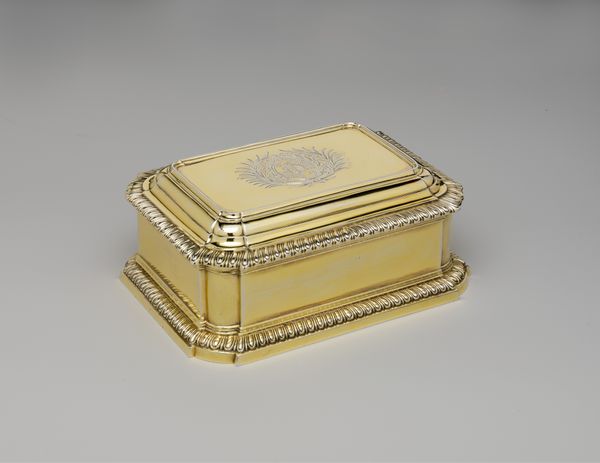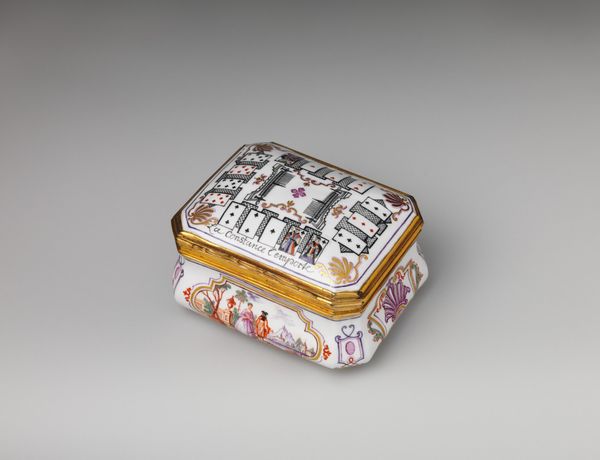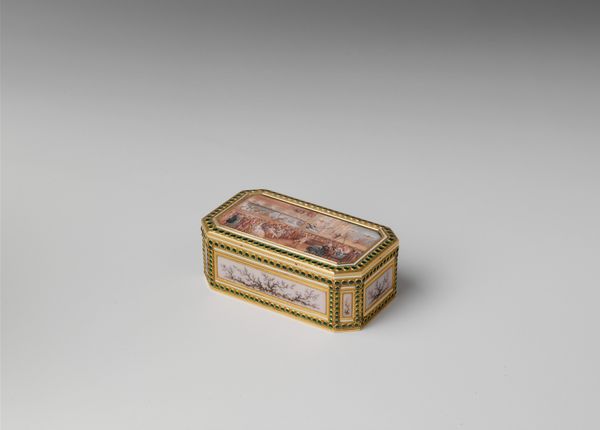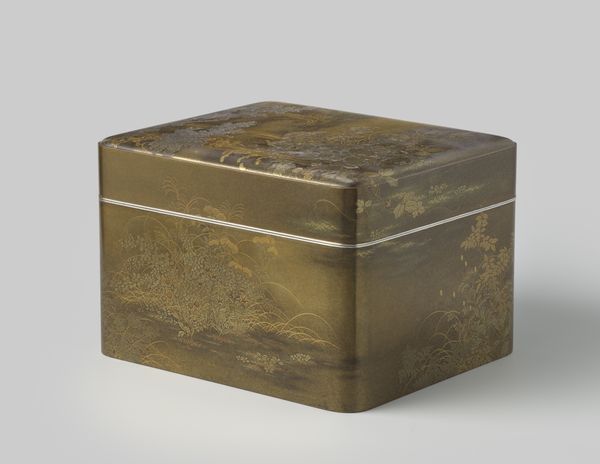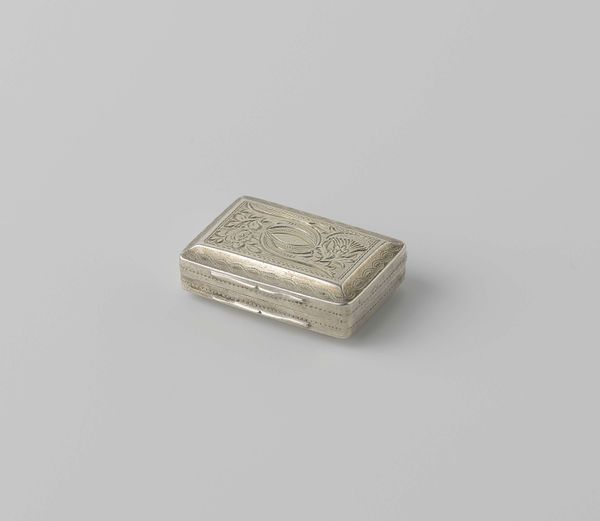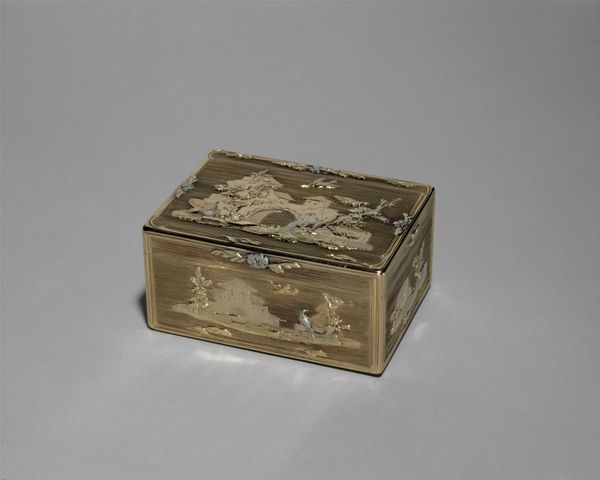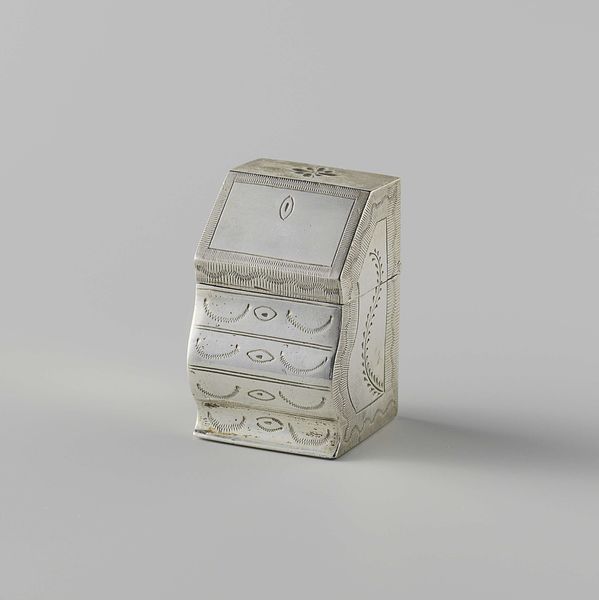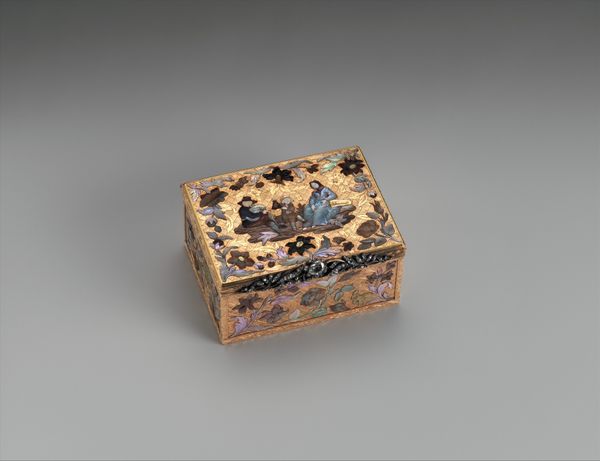
metal, porcelain, sculpture
#
metal
#
porcelain
#
sculpture
#
decorative-art
#
miniature
#
rococo
Dimensions: H. 2-1/16 in. (5.2 cm); W. 3 in. (7.6 cm); D. 2-1/4 in. (5.7 cm)
Copyright: Public Domain
Curator: What a charming object. We're looking at a porcelain and metal snuffbox created sometime between 1739 and 1755 by the workshop of Charles Fromery. Its delicate size immediately grabs my attention. What do you think? Editor: There's a sort of restrained opulence to it. The gold against the white gives it a clean look, but it also hints at the decadence associated with snuff consumption back then. Curator: Precisely. Snuffboxes like this weren't merely functional; they were status symbols. They circulated in spaces and created networks where elites gathered. Think of the ritual involved—the offering, the taking, the societal expectations—all mediated by this small, gilded box. Editor: And that central motif on the lid - it seems to me like some kind of heraldic crest, perhaps subtly referencing the owner's family lineage. It's more than mere decoration. Curator: The Rococo style, known for its ornamentation and asymmetrical designs, played a significant role in shaping perceptions of gender and power dynamics, particularly within aristocratic circles. These decorative elements reinforced traditional social hierarchies. Editor: Right, the craftsmanship alone broadcasts privilege. Imagine the number of hands involved, the specialist knowledge… but I also see the inherent irony. Taking snuff was about pleasure, but this ornate object signifies constraints, right? You’re always on show; status comes with performance. Curator: Absolutely. The snuffbox is not just a pretty object; it encapsulates broader cultural issues. These types of miniature sculptures serve as important reflections of that era, inviting questions about class, power, and social identity. Editor: Looking at the little festoons repeated on its sides, it reminds me how potent visual cues were for constructing and communicating selfhood back then, even through seemingly trivial accessories. Curator: Indeed, it’s quite telling how a small, ornate object can reveal complex facets of historical existence. Editor: Exactly, sometimes the most precious objects hold the richest cultural clues.
Comments
No comments
Be the first to comment and join the conversation on the ultimate creative platform.
